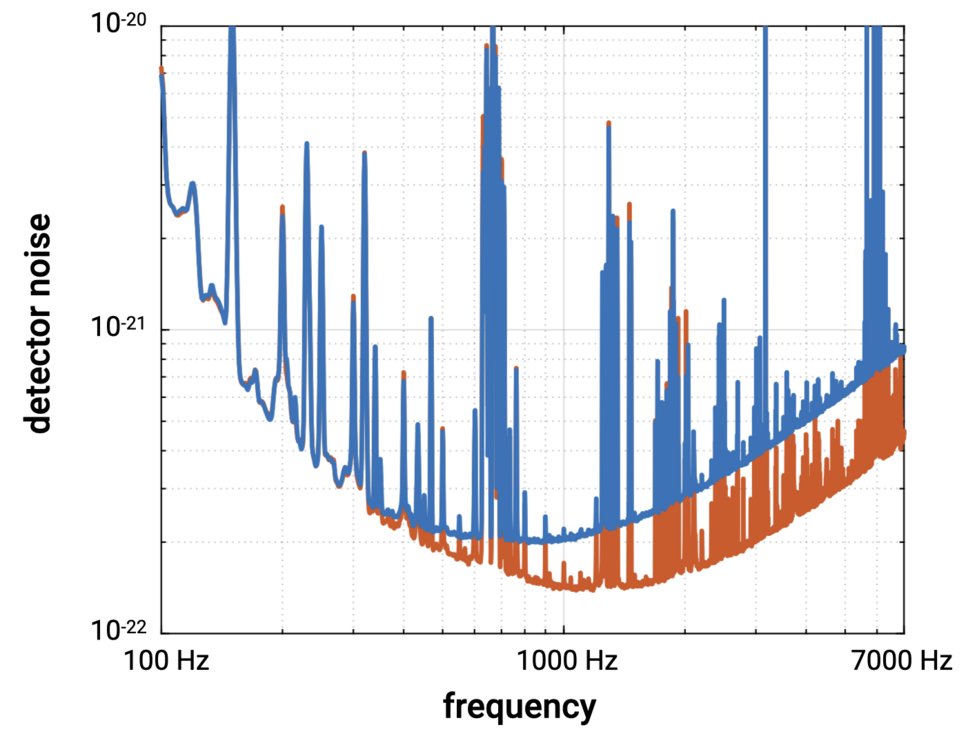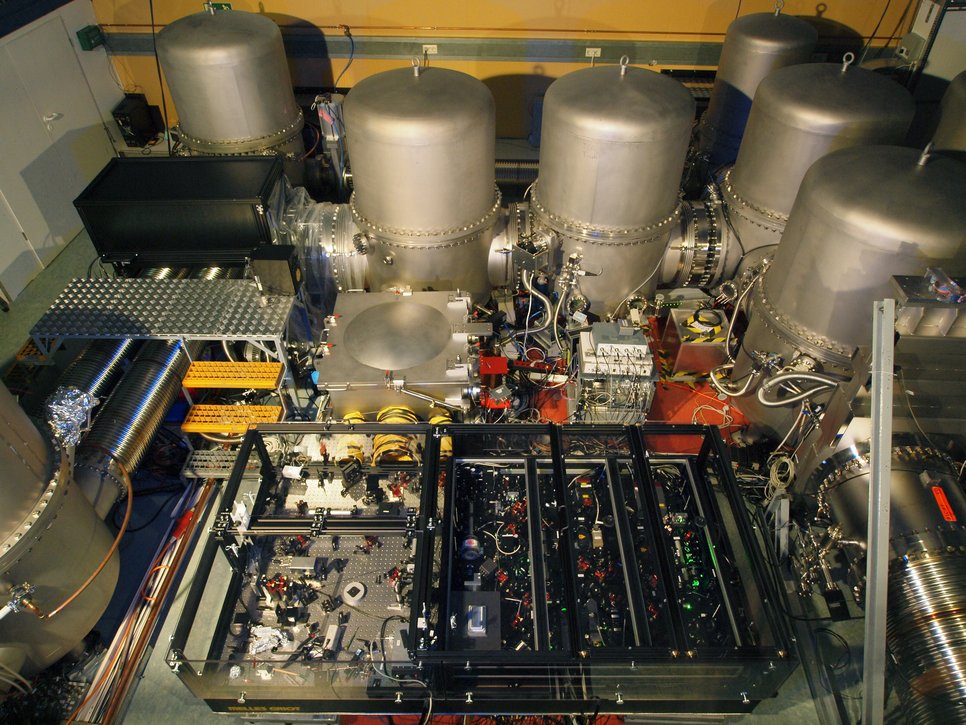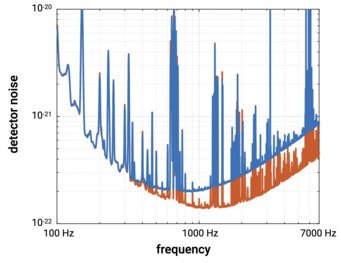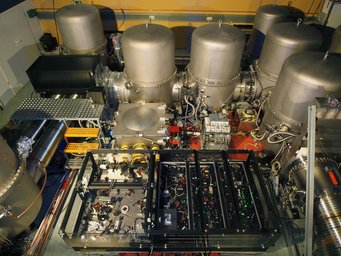GEO600 reaches 6 dB of squeezing
German-British instrument mitigates quantum noise effects better than any gravitational-wave detector before
Gravitational waves cause tiny length changes in the kilometer-size detectors of the international network (GEO600, KAGRA, LIGO, Virgo). The instruments use laser light to detect these effects and are so sensitive that they are fundamentally limited by quantum mechanics. This limit manifests as an ever-present background noise which can never be fully removed and which overlaps with gravitational-wave signals. But one can change the noise properties – using a process called squeezing – such that it does not disturb the measurements as much. Now, GEO600 researchers have achieved the strongest squeezing ever seen in a gravitational-wave detector. They lowered the quantum mechanical noise by up to a factor of two. This is a big step to third-generation detectors such as the Einstein Telescope and Cosmic Explorer. The GEO600 team is confident to reach even better squeezing in the future.
GEO600 listens to a part of the Universe eight times larger

The team from the Max Planck Institute for Gravitational Physics (Albert Einstein Institute; AEI) and the Institute for Gravitational Physics at Leibniz University Hannover, together with partners at Cardiff University and University of Glasgow lowered the quantum background noise by a factor of 2, an achievement the scientists call a squeezing level of 6 dB.
“We have focused on optimizing and characterizing the squeezed-light source at GEO600 and its interface to the detector. Compared to a detector without squeezing the observable volume of the Universe has now increased by a factor of 8 at high frequencies. This could help improve our understanding of neutron stars,” says Dr. James Lough, lead scientist for GEO600 and first author of the publication that appeared in Physical Review Letters.
The research team achieved the new record with newly designed and custom-made optical components and by optimizing the optical setup of the squeezed-light source and how its output is fed into the detector.
Pioneer work at GEO600

“The German-British GEO600 team members are squeezed light pioneers. We have been routinely using squeezed light since 2010 and have been the only instrument in the world to do so until the start of O3 in April 2019,” explains Dr. Christoph Affeldt, GEO600 operations manager. “The custom-made squeezed-light source for GEO600 was developed and built at the AEI in Hannover. Several GEO600 PhD students together with squeezing experts at AEI have made this record possible.“
Key to achieving ever better squeezing levels is a tight and lossless integration of the “squeezer” into the detector, because of the fragile nature of squeezed light. This is where the efforts of the team were focused recently. While squeezing can potentially increase the sensitivity of GEO600 by a lot, even the smallest loss on its way into the detector can degrade it. This way, many small incremental improvements can result in a large plus in sensitivity.
On the way to third-generation detectors
“The international community is currently planning the third generation of gravitational-wave detectors: the European Einstein Telescope and Cosmic Explorer in the US. Both will need even higher levels of squeezing than the impressive results we obtained. GEO600 is in the ideal position to further optimize this technology,” says Prof. Karsten Danzmann, director at the AEI and director of the Institute for Gravitational Physics at Leibniz Universität Hannover. “We are confident that at GEO600 we can reach 10 dB, the level of squeezing required for future gravitational-wave detectors.”

